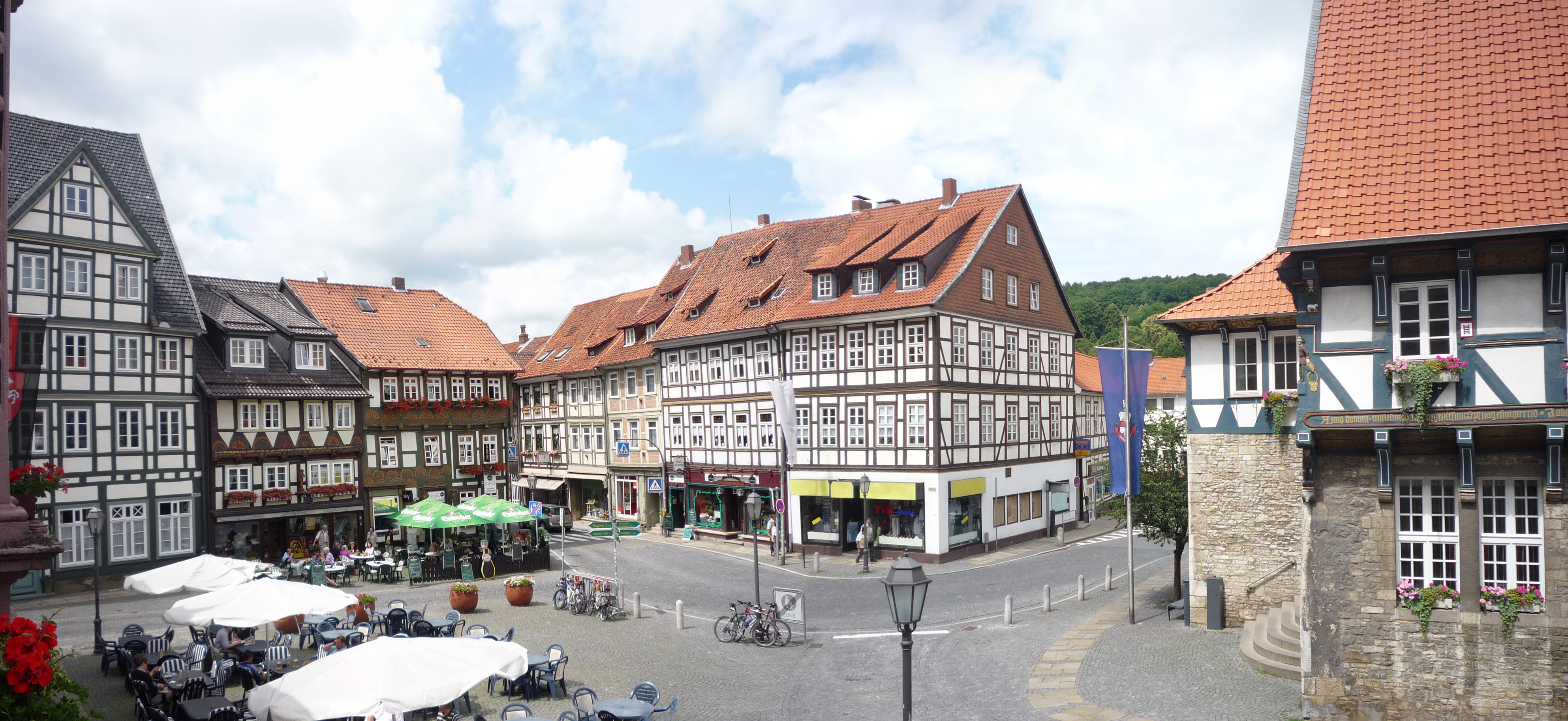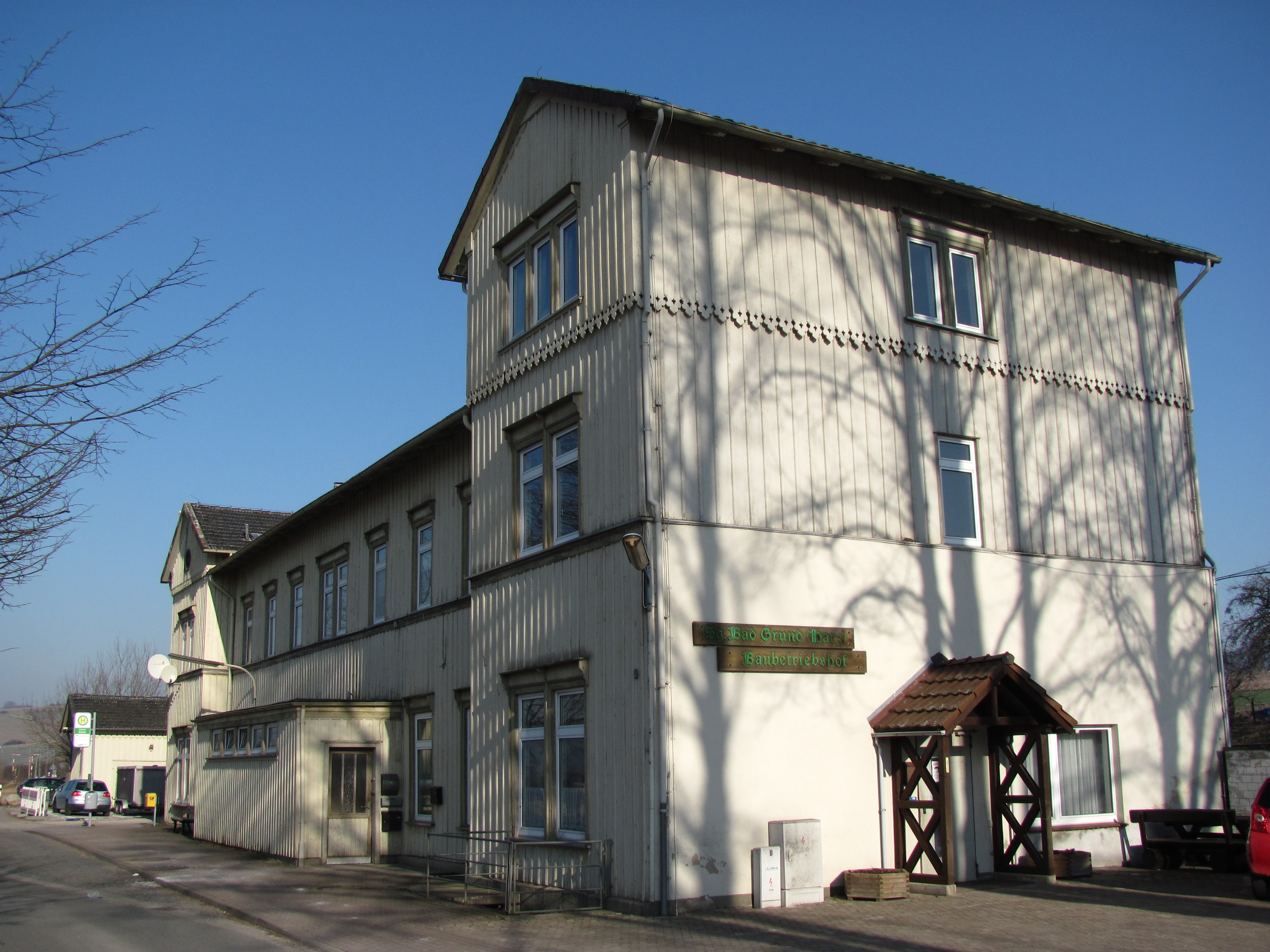|
Brunswick Southern Railway
The Brunswick Southern Railway (german: Braunschweigische Südbahn) was built by the Duchy of Brunswick State Railway as a link from its Brunswick–Bad Harzburg railway to the Hanoverian Southern Railway. It ran through the northwestern Harz Foreland from Börßum via Salzgitter, Ringelheim and Seesen to Kreiensen. It opened on 5 August 1856 and was one of the oldest railways in Germany. In 1956 a shorter link to Brunswick was built in the shape of the Brunswick–Salzgitter Bad railway and with this line was connected through to the Brunswick–Kreiensen railway. Traffic Today it mainly serves regional trains and, after that, a few goods trains. In the 2009 timetable it will be worked hourly by ''Regionalbahn'' trains from Brunswick via Seeseon to Herzberg am Harz, and every two hours by the ''Regionalbahn'' from Bad Harzburg via Seesen to Kreiensen (with extra services at peak times). Normally Lint multiples (DB Class 648) are used that are stabled by Alstom at Salzgitter ... [...More Info...] [...Related Items...] OR: [Wikipedia] [Google] [Baidu] |
Börßum
Börßum is a municipality in the district of Wolfenbüttel, in Lower Saxony, Germany. Geography Börßum lies only a few kilometers north of the Harz Mountains, north of Schladen, on the east bank of the Oker, 11 km south of Wolfenbüttel. It is not far southeast of the Oderwald. Parts of its municipality are Börßum, Achim, Bornum, Kalme and Seinstedt. History Börßum already had a lot of names: 1135 Borsne, 1310 Borssen, 1338 Borssem, 1422 Groß Borsem, 1581 Borsum, 1652 Börsumb, around 1770 Borsheim, 1765 Boersheim, since 1762 Börßum. On November 1st, 2011 the municipality of Achim was incorporated into Börßum. Incorporations * 1 November 2011: Incorporation of the municipality of Achim which included Kalme und Seinstedt * 1 March 1974: Bornum Religion In Börßum there is the Protestant Peter-und-Paul-Kirche, the parish belongs to the parish association Börßum-Achim-Bornum of the provostry Schöppenstedt. In 1954, the Catholic Curacy of Börßum was ... [...More Info...] [...Related Items...] OR: [Wikipedia] [Google] [Baidu] |
Lutter Am Barenberge
Lutter am Barenberge is a market town (''Flecken'') and a former municipality in the Goslar district of Lower Saxony, Germany. Since 1 November 2021, it is part of the town Langelsheim, of which it is an ''Ortschaft''.Hauptsatzung der Stadt Langelsheim § 4, November 2021. It was the administrative seat of the former '''' ("collective municipality") Geography It is situated between the |
Kreiensen Station
Kreiensen station is a Keilbahnhof ("wedge station") in Kreiensen in the German state of Lower Saxony and along with Einbeck-Salzderhelden station one of two stations in the town of Einbeck. History The first station in the Duchy of Brunswick was established in Kreiensen in 1854. It consisted of station buildings, outbuildings and goods sheds, as well as an extension with ancillary facilities. It became more congested with the opening of the Altenbeken–Kreiensen railway in 1865. Following the opening of the Brunswick–Bad Harzburg railway of the Duchy of Brunswick and the Vienenburg–Goslar railway in 1866, new construction at the station began in 1886. Reliefs of the Brunswick Lion on the east side and a Coat of arms of Prussia, Prussian eagle on the west side reflect its joint use by Hanover and Brunswick—the Kingdom of Hanover was located directly north and south. Master builder Richard Herzig had 35,000 yellow and red facing bricks and 110,000 common bricks delivered. ... [...More Info...] [...Related Items...] OR: [Wikipedia] [Google] [Baidu] |
Hanoverian Southern Railway
The Hanoverian Southern Railway (German: ''Hannöversche Südbahn'') is a historical term but it is still a common name for the line between Hanover and Kassel. It is a German main line railway in Lower Saxony and is one of the oldest lines in Germany, opened between 1853 and 1856 by the Royal Hanoverian State Railways. History Its northern sections from Hanover to Alfeld (opened in 1853) and Alfeld to Göttingen (opened in 1854) are part of a once important north-south route that continues in operation. The southern section, known as the Dransfeld Ramp (German: ''Dransfelder rampe'') from Göttingen to Hannoverian Münden opened on 8 May 1856 and closed in stages between 1980 and 1995. The connection from Hann. Münden to Kassel was added in 1856 and continues in operation as part of the Halle–Kassel line. The term ''Hanoverian Southern Railway'' fell out of official use after the annexation of the Kingdom of Hanover by Prussia after the War of 1866, but is now used by r ... [...More Info...] [...Related Items...] OR: [Wikipedia] [Google] [Baidu] |
Hanover–Würzburg High-speed Railway
The Hanover–Würzburg high-speed railway was the first of several high-speed railway lines for InterCityExpress traffic that were built in Germany. While technically starting in the village of Rethen and ending at Würzburg Hauptbahnhof, it is a de facto link between Hanover and Würzburg, with stops at Göttingen, Kassel, and Fulda. Early construction started in 1973, the line opening fully in 1991. At in length, it is the longest newly built rail line in Germany, and its construction costs are estimated to be about DM 40 million (€20.45 million) per kilometre. History The Deutsche Bundesbahn began construction of the line in 1973. Since it was designed for fast passenger trains as well as for express freight trains, its maximum incline is a mere 1.25%. Combined with the hilly terrain, this made the construction of 61 tunnels and 10 large bridges necessary. Of the 327 km of total length, 120 km are in tunnels, the two longest being the Landrücken Tunnel ... [...More Info...] [...Related Items...] OR: [Wikipedia] [Google] [Baidu] |
Bad Gandersheim
Bad Gandersheim ( Eastphalian: ''Ganderssen'') is a town in southern Lower Saxony, Germany, located in the district of Northeim. , it had a population of 9,492. Bad Gandersheim has many half-timbered houses and is located on the German Timber-Frame Road (german: Deutsche FachwerkstraĂźe). The town contains an airport as well. Geography The town of Bad Gandersheim lies between the Leine Uplands, Weser Uplands, and Harz Foreland in the valley of the Gande River, into which its tributary, the Eterna, empties within the town's territory. To the north lies the Heber Ridge. The borough is predominantly hilly. The Harz Mountains begin about east of the town, and to the west is the Leine Graben (german: Leinegraben). Borough divisions The borough of Bad Gandersheim consists of the following subdivisions based on the surrounding villages: History The town dates back to 852, when Gandersheim Abbey, a house of secular canonesses, was created in nearby Brunshausen by Liudolf, ... [...More Info...] [...Related Items...] OR: [Wikipedia] [Google] [Baidu] |
Lamme Valley Railway
The Lamme Valley Railway (german: Lammetalbahn) is a branch line, that branches off the Hildesheim–Goslar railway in Groß Düngen and continues today via Bad Salzdetfurth to Bodenburg. From there it used to continue via Lamspringe to Bad Gandersheim on the Brunswick–Kreiensen railway. The surviving section of the railway, which lies wholly within the borough of Bad Salzdetfurth, serves today mainly as a tourist and commuter line. In this area the railway follows the river Lamme, which gave rise to the name of the line. History The line was opened between Groß Düngen and Bad Salzdetfurth on 1 October 1900. Wesseln station was opened on 1 November 1901. The extension of the line between Bad Salzdetfurth and Bodenburg followed on 7 November 1901. On the same day, the state railways opened an extension of the Elze– Gronau branch line, in operation since 1 July 1900, to Bodenburg. The extension between Bodenburg and Lamspringe and to Bad Gandersheim was opened on 1 October 190 ... [...More Info...] [...Related Items...] OR: [Wikipedia] [Google] [Baidu] |
Harriehausen
Bad Gandersheim ( Eastphalian: ''Ganderssen'') is a town in southern Lower Saxony, Germany, located in the district of Northeim. , it had a population of 9,492. Bad Gandersheim has many half-timbered houses and is located on the German Timber-Frame Road (german: Deutsche FachwerkstraĂźe). The town contains an airport as well. Geography The town of Bad Gandersheim lies between the Leine Uplands, Weser Uplands, and Harz Foreland in the valley of the Gande River, into which its tributary, the Eterna, empties within the town's territory. To the north lies the Heber Ridge. The borough is predominantly hilly. The Harz Mountains begin about east of the town, and to the west is the Leine Graben (german: Leinegraben). Borough divisions The borough of Bad Gandersheim consists of the following subdivisions based on the surrounding villages: History The town dates back to 852, when Gandersheim Abbey, a house of secular canonesses, was created in nearby Brunshausen by Liudolf, Du ... [...More Info...] [...Related Items...] OR: [Wikipedia] [Google] [Baidu] |
Bundesautobahn 7
is the longest German Autobahn and the longest national motorway in Europe at 963 km (598 mi). It bisects the country almost evenly between east and west. In the north, it starts at the border with Denmark as an extension of the Danish part of European route E45, E45. In the south, the autobahn ends at the Austrian border. This final gap was closed in September 2009. Overview The Bundesautobahn 7 starts at Flensburg and travels through the two states at Schleswig and Rendsburg, through the world's busiest artificial waterway of Kiel Canal crossing the Rader high bridge. At Rendsburg you can change to the A 210, a feeder to the Schleswig-Holstein capital, Kiel. A few kilometers further south there is another feeder route to Kiel, the A 215, into the A7 at the interchange Bordesholm; however, this can only be reached from the south, likewise from the A 215 you can only reach the A7 in the south. South of Bordesholm, the highway has been continuously expanded to six lanes sinc ... [...More Info...] [...Related Items...] OR: [Wikipedia] [Google] [Baidu] |
Herzberg–Seesen Railway
The Herzberg–Seesen railway, also known as the West Harz Line (german: Westharzstrecke), is a 32 km long railway line, that runs along the western edge of the Harz mountains and serves the town and the district of Osterode am Harz. It is the shortest link from Brunswick to Erfurt and is worked today by Lint multiples from Brunswick via Salzgitter, Seesen and Osterode to Herzberg mainly at hourly intervals. In Herzberg there are connexions to Göttingen and Nordhausen. The line was opened in 1871 as a link between the South Harz Line and the Brunswick Southern Railway from Brunswick via Salzgitter to Kreiensen. It was planned as a long-distance route; and its trackbed laid for two tracks. This, however, did not materialise. Today it is operated as a branch line. At the beginning of the 1990s the Herzberg–Seesen railway was threatened with closure. Since then, introducing of weekend services and of a Taktfahrplan has made it significantly more attractive to travellers. In ... [...More Info...] [...Related Items...] OR: [Wikipedia] [Google] [Baidu] |
Seesen Station
Seesen station is the largest station in the town of Seesen in the German state of Lower Saxony. Münchehof (Harz) station also still serves the municipality. It has three platform edges with a length of 140 metres each and a height of 55 centimetres. The station was made barrier-free under the project ''Niedersachsen ist am Zug II'' ("Lower Saxony is on the train II") for about €2.6 million: lifts were installed on platform 1 and on the island platform with tracks 2 and 4. Each platform has a dynamic train indicator that informs about delays and other deviations from the timetable. The old freight yard in Seesen is no longer used and has been abandoned. The tracks that were no longer needed for freight transport were removed by 2013. Track 3 of the passenger station had already been dismantled. Station building The station building is only used to a limited extent and is now privately owned. In addition to the waiting room, a DB travel agency is also housed in the station ... [...More Info...] [...Related Items...] OR: [Wikipedia] [Google] [Baidu] |






